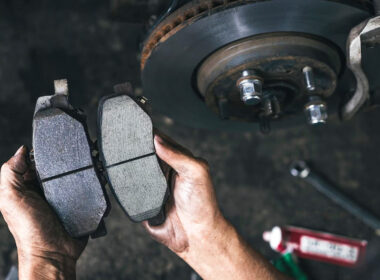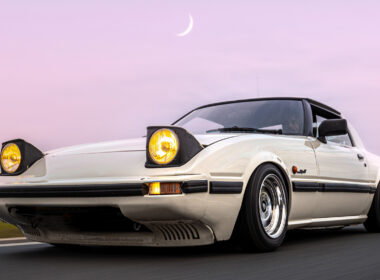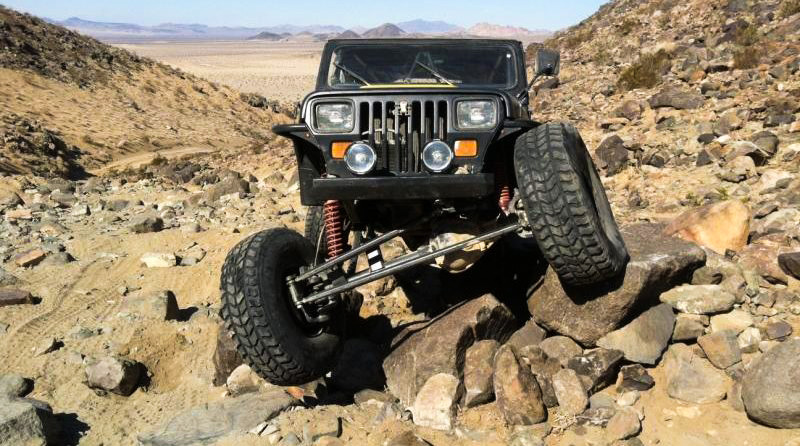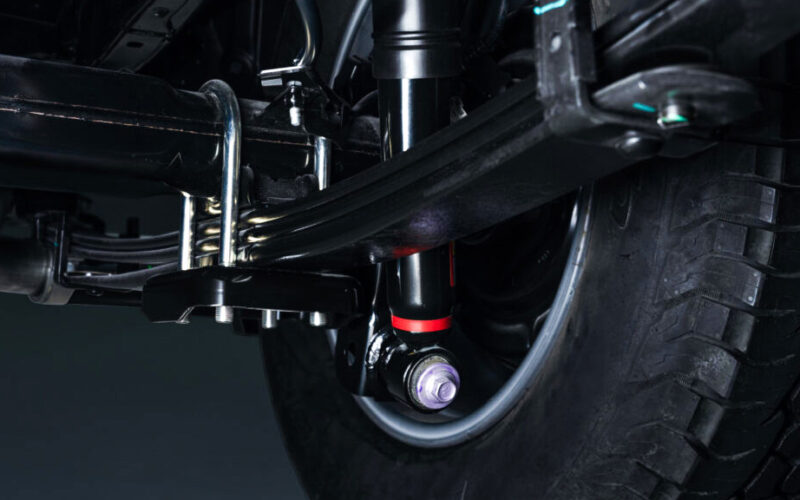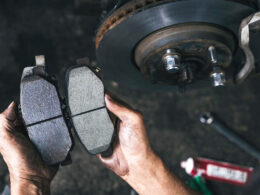The off-road community has changed significantly over time, but the solid axle vs independent suspension debate is still alive and well. Some say IFS is better for road cars, while others believe that solid axle reigns supreme off the beaten path.
But is that the case? We don’t think so. In this article, we’ll take a closer look at the two suspension types and discuss their pros and cons to find out which is the better choice.
Spoiler: Neither is better than the other, it’s more about choosing what’s right for your application.
Solid Axle Suspension
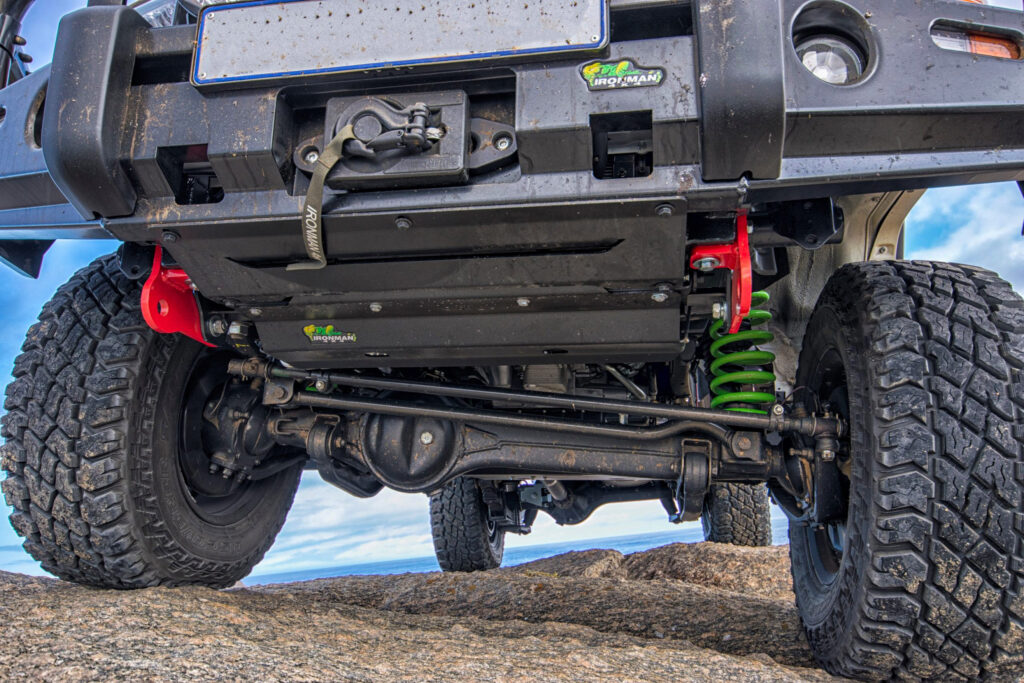
So what exactly is a solid axle suspension?
A solid axle, otherwise called a live or beam axle, involves a shaft that connects both wheels, running from side to side, either with or without a differential sandwiched between. It’s a form of dependent suspension which nowadays is mostly seen on vans and utility trucks.
Almost all 4x4s use solid axles, and for good reason. The way it’s designed makes it unsuitable for most road cars. That’s primarily because any impact on one wheel affects the dynamics of the opposite wheel.
Interestingly though, it’s not uncommon to see muscle cars and dragsters with a solid rear axle, since they allow for more stable launches and are a lot stronger.
Solid axles do have their advantages in terms of performance and off-road performance, most notably better power delivery, mechanical simplicity, and enhanced wheel articulation.
That’s largely why you’ll find solid axles in most Jeeps and other vehicles that prioritize utility, towing, and off-roading.
Even though they’re being phased out, solid axles are still huge in the rock-crawling community. Back in the 20th century, it was pretty common across all platforms; you’d find a beam axle on almost anything with 4 wheels.
However, since automakers have developed more compact and cost-effective alternatives to live axles, most mass-market cars like sedans and SUVs have moved on to independent suspension, especially at the front.
Independent Suspension
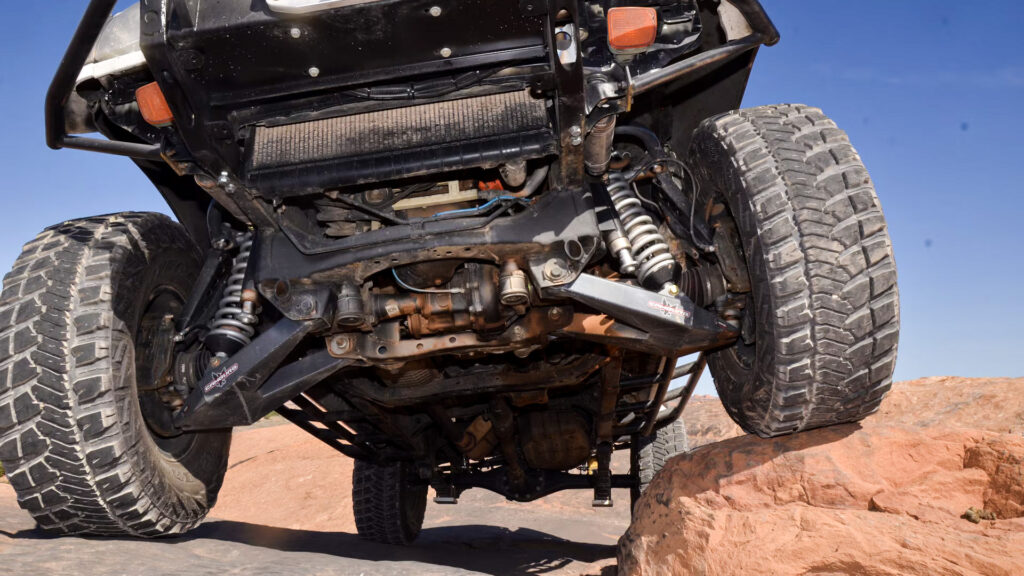
Independent front suspension (IFS) is commonly seen on almost all new cars, with some high-end examples featuring an independent rear suspension (IRS) as well.
This suspension type is defined by how it allows two axles (and effectively wheels) to have an independent travel path, unlike solid axles that are interconnected.
As the name suggests, the wheels move independently of one another in this configuration, allowing predictable performance and improved ride quality.
Though all independent suspensions work on the same core principle, they’re configured differently depending on the use case and desired driving experience.
For example, a Porsche 911 GT3 is going to have a differently arranged independent suspension setup and geometry compared to what you’ll see in a Rolls-Royce Phantom, for instance.
Independent suspension comes in various designs, ranging from Wishbones to MacPherson struts and all kinds of multi-link arrangements.
Most types of independent suspension, especially multi-link, are very expensive to manufacture, making it quite uncommon for mass-market production cars.
Of course, the exception here is the MacPherson strut design, as this is the most widely adopted IFS system. Its popularity boils down to better packaging and low manufacturing costs.
It’s worth mentioning that there is something else called a solid axle multi-link independent suspension. The design, however, is a hybrid setup commonly seen on most off-road vehicles with a coilover suspension.
Pros and Cons of Solid Axle Suspension
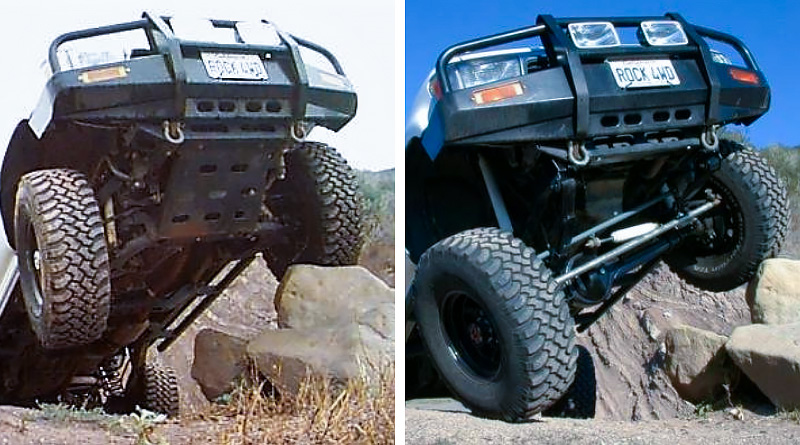
As mentioned, solid axles are ideal for 4x4s and drag rigs, but it’s not perfect. While there are advantages to employing a solid axle design, the arrangement does come with several drawbacks that you should be aware of:
- Heavier than independent setups
- Ride quality is relatively poor
- Cornering performance is compromised
- Increased unsprung weight
- Unpredictable handling, especially at high speeds
- When improperly set up, drivers may experience axle wrap, wheel hop, and flex steer
Advantages of solid axle suspension include:
- Simple design
- Puts the power down better, improving launch times and towing capacity
- Excellent for hauling heavy loads
- Incredibly robust, having the ability to withstand extensive abuse
- Unlocks the potential for better wheel articulation, especially on coilovers
- Cheaper to manufacture and install
- Relatively fewer failure points
Advantages and Disadvantages of Independent Suspension
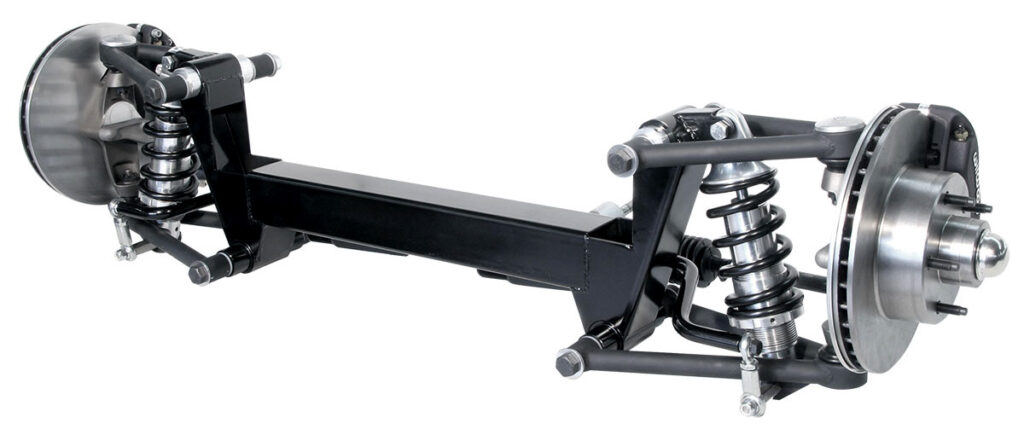
While an independent setup is more commonly used, that doesn’t make it the best type of suspension in any way. Every configuration comes with its fair share of compromises. Designing a suspension geometry has a lot to do with the need, cost, and available space.
Running an independent arrangement does come with its perks, but you sure want to consider some of its downsides:
- Expensive to design and install
- Significantly more complex
- May not be as durable as a solid axle system
- More fine-tuning is required
- Less desirable for towing and hauling heavy loads
- More failure points
- Some designs limit excessive wheel travel and induce wheel hop
- Torque steer is also a concern, especially on FWD cars running a MacPherson strut IFS
Advantages
- Most independent designs are lighter, owing to their use of aluminum
- Reduced unsprung weight, improving suspension response times
- Better ride quality and comfort
- Enhanced on-road performance
- Increased traction during cornering
- Predictable handling, especially at high speeds
- Multiple configurations can be engineered depending on the use case
Busting Myths
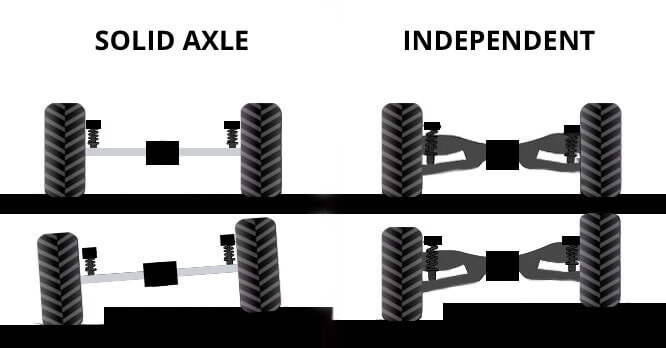
This shouldn’t come as a surprise; there are countless myths surrounding suspension design, so much so that it warrants an entire article dedicated to the subject.
But for the moment, we’ll highlight some of the most notable misconceptions about solid axles and independent suspensions.
Myth 1: Solid Axles Are for Utility Vehicles Only, Independent Is for Road Cars Only
This is not true. You can have a road car with a solid axle suspension and an off-road rig with a fully independent suspension. The 2012 Mustang Boss 302 is a prime example of this, as are dune buggies.
So then, why don’t most compact sedans use solid axles? As far as OEMs are concerned, it all comes down to engineering effort, available space, and development costs.
Myth 2: IFS Has Poor Articulation, Solid Axles Are Objectively Better for All 4x4s
Okay, there is some truth to this. By design, a comparably set up independent suspension will not offer as much wheel articulation as a coilover solid axle arrangement. However, a bespoke dune buggy with long-travel IFS can outperform most factory 4x4s with solid axles.
Alternatively, some well-known factory 4x4s have favored a fully independent design over solid axles. The Land Rover Discovery and Range Rover are excellent examples, as are some of the modern Jeep Cherokee and Grand Cherokee models.
IFS vs Solid Axle: Which One’s Better?
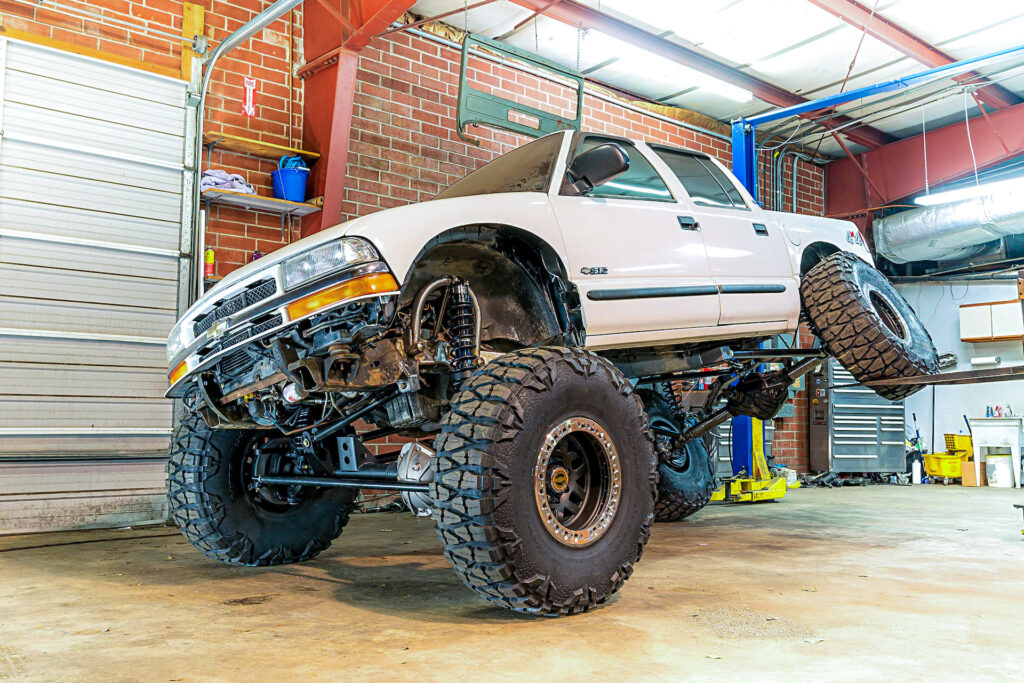
Choosing one over the other comes down to a variety of factors. Everything from the use case to cost, space, and complexity plays a part in terms of suspension choice. Even then, you’ll have to put up with a lot of compromises.
There is a reason why automakers prefer an independent front and solid axle rear on most of their heavy-duty trucks and not the other way around. Packaging a MacPherson strut at the front is far simpler and less space-consuming than a solid axle leaf spring.
But when it comes to hauling, the latter is better than an IRS, as it’s stronger, less complex, and helps with weight transfer and power delivery.
Also, in cheaper FWD compacts, it’s more cost-effective to install a MacPherson strut at the front and run a solid axle or semi-independent suspension at the rear.
On expensive cars, performance, handling, and ride quality take precedence over cutting costs. So, automakers can justify developing an all-independent layout.
The bottom line is that in some cases, an IFS is better than a solid front axle, while in others, a solid axle rear makes more sense than setting up an expensive IRS configuration.
Wrapping Up
We’ve said it before, and we’ll say it again—there is no such thing as the perfect suspension. There is no one-size-fits-all approach when it comes to suspension design.
For instance, an FWD arrangement will have different driveline components compared to an RWD setup. It’s about designing a suspension that’s right for the specific vehicle and its driving needs.
Hope this article helped shed more light on the independent vs solid axle debate. If you have any questions or experiences you’d like to share, let us know by leaving a comment below.
